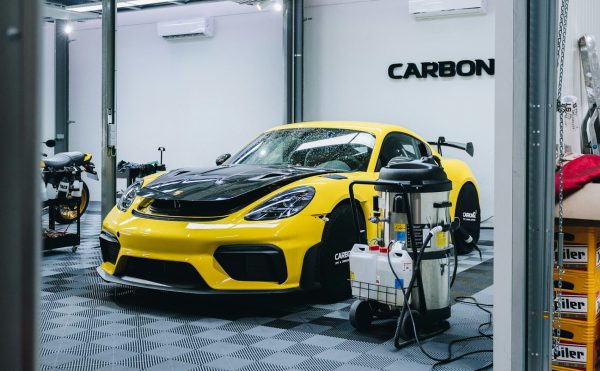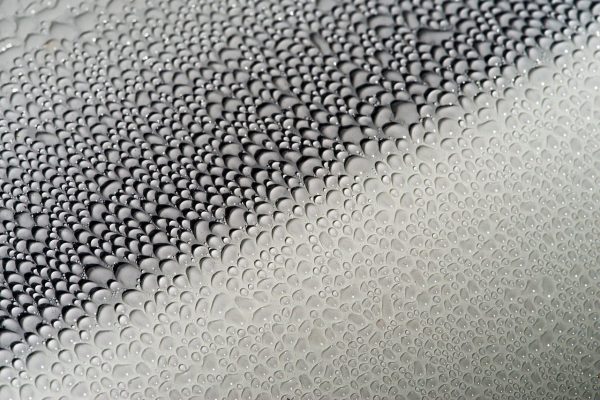
Washing a ceramic coated car requires a gentle approach to maintain the protective layer while keeping the car clean. Start by rinsing the car with water to remove loose dirt and debris. Use a pH-balanced car soap, as harsh chemicals can damage the ceramic coating. It’s best to use the two-bucket method—one for soapy water and one for rinsing your wash mitt— to prevent scratching the surface. Wash the car in sections, starting from the top and working your way down, to ensure thorough cleaning. After washing, rinse the car thoroughly and dry it with a microfiber towel or a car dryer to prevent water spots. Avoid using a power washer directly on the ceramic coating, as it can damage the layer if used too aggressively. Regular washing with the right products will help maintain the coating’s effectiveness and keep your car looking its best.
Disadvantages of Ceramic Coating
While ceramic coatings offer many benefits, they also have some disadvantages. One of the main drawbacks is the cost, as ceramic coatings can be expensive to apply, especially when done professionally. Although the coating provides protection, it is not completely maintenance-free. Regular washing is still necessary to maintain its effectiveness, and water spots or contaminants can still stick to the surface. Ceramic coatings also don’t protect against physical damage like scratches or dents, so it’s important to be cautious with your car. The application process can also be time-consuming and requires proper preparation of the vehicle’s surface to ensure the coating bonds correctly. Despite these disadvantages, many car owners find the long-term benefits of ceramic coatings, like enhanced shine and protection against environmental elements, are worth the investment.
What Is Ceramic Coating?
Ceramic coating is a protective liquid polymer applied to surfaces, most commonly on cars, to shield them from damage and enhance their appearance. Once applied, the coating chemically bonds to the surface, creating a durable, transparent layer that repels water, dirt, and contaminants. This hydrophobic layer helps protect against environmental damage like UV rays, oxidation, and minor chemical stains. Ceramic coatings are also known for their glossy finish, giving vehicles a polished, high-end look. While it doesn’t eliminate the need for cleaning or make surfaces completely scratch-proof, ceramic coating significantly reduces maintenance and keeps the surface looking newer for longer.

Is Ceramic Coating Worth It?
Ceramic coating is worth it for many car owners who want long-lasting protection and a polished appearance for their vehicle. While it can be expensive, the coating provides a durable, hydrophobic layer that repels water, dirt, and contaminants, making the car easier to clean. It also protects against UV rays, oxidation, and minor chemical damage, helping to preserve the paint’s quality and value over time. It is important to remember that it’s not a complete solution, as it won’t prevent scratches or eliminate the need for regular maintenance. For those who value reduced upkeep and a sleek, glossy finish, the long-term benefits of ceramic coating often outweigh the initial investment.
What Is the Price of Ceramic Coating?
The price of ceramic coating can vary depending on the size of the vehicle, the quality of the product, and whether it’s applied professionally or at home. Professional ceramic coating services typically range from $500 to $2,000 or more. The higher cost reflects the labor-intensive process, which includes surface preparation like washing, claying, and polishing to ensure the coating bonds properly. DIY ceramic coating kits are a more affordable option, costing between $50 and $200, but they require careful application and may not last as long as professional-grade coatings. While the upfront cost of ceramic coating can be high, many car owners find it worthwhile for the long-lasting protection and reduced maintenance it provides.

What Is the Process of Ceramic Coating?
The process of ceramic coating involves many steps to ensure proper application and long-lasting results. What you’ll want to do first is make sure the car is thoroughly washed to remove dirt, grime, and debris from the surface. After that make sure a clay bar is used to eliminate any embedded contaminants that washing alone cannot remove. Once the surface is clean, it is polished to remove imperfections, such as scratches or swirl marks, ensuring a smooth base for the coating. The ceramic coating is then carefully applied in small sections using an applicator pad and allowed to cure. After curing, the surface is buffed to ensure an even, glossy finish. This meticulous process helps the ceramic coating bond effectively to the car’s paint, providing long-term protection and a shiny appearance.
Is Ceramic Coating Harmful to a Car’s Paint?
Ceramic coating is not harmful to a car’s paint when applied correctly. It is actually designed to protect the paint by creating a durable, hydrophobic layer that shields the surface from UV rays, dirt, and minor chemical damage. It’s important to remember that improper application, such as failing to clean or prep the surface properly, can result in uneven coating or bonding issues. These mistakes may require professional correction, which can be time-consuming and costly. As long as the product is applied following the manufacturer’s instructions or by a professional, ceramic coating is safe and enhances the paint’s durability and appearance.

How Long Does Ceramic Coating Last?
The lifespan of ceramic coating depends on the quality of the product and how well it is maintained. Professionally applied ceramic coatings can last anywhere from 2 to 5 years, or even longer with proper care. DIY ceramic coatings generally have a shorter lifespan, typically lasting 1 to 2 years. Regular washing, avoiding harsh chemicals, and applying maintenance boosters can help extend the coating’s durability. While ceramic coatings provide long-lasting protection, they are not permanent and will eventually wear off, requiring reapplication to maintain their benefits.
What Is the Best Way to Maintain a Ceramic Coated Car?
The best way to maintain a ceramic-coated car is through regular, gentle cleaning and proper care. Wash the car every one to two weeks using a pH-balanced car soap and the two-bucket method to avoid scratching the surface. Avoid using harsh chemicals or abrasive cleaners, as they can degrade the coating over time. Dry the car immediately after washing with a microfiber towel or car dryer to prevent water spots. Applying a ceramic booster or maintenance spray every few months also helps refresh the coating and prolong its protective properties. By following these steps, you can keep your ceramic-coated car looking glossy and protected for years.
Does Ceramic Coating Come with a Warranty?
Ceramic coating can come with a warranty, but it depends on the product and the professional service you choose. Many high-end professional ceramic coatings offer warranties that can last anywhere from 1 to 5 years, depending on the coating’s durability and the service package. Be sure to remember that these warranties often have specific terms, such as regular maintenance and proper washing techniques, to keep the warranty valid. DIY ceramic coating products typically do not come with a warranty, as their application and durability depend on the user. If you’re considering ceramic coating with a warranty, it’s important to ask about the coverage details and follow the required care instructions to maintain the protection.

white aston martin with clear coat
Are There Different Types of Ceramic Coating?
Yes, there are different types of ceramic coatings available, each designed for specific applications and levels of protection. Professional-grade ceramic coatings, often applied by trained detailers, provide the most durable and long-lasting protection, typically lasting several years. Consumer-grade coatings, available as DIY kits, are easier to apply but usually offer shorter protection, typically around 1 to 2 years. Some ceramic coatings are specialized for certain surfaces, such as paint, glass, or wheels, providing targeted protection where it’s needed most. Hybrid ceramic coatings combine traditional wax with ceramic properties, offering a simpler application with moderate protection. These options allow car owners to choose a coating based on their needs, budget, and level of expertise.
What Type of Ceramic Coating Is Best for a Car?
The best type of ceramic coating for a car depends on the owner’s needs, budget, and desired level of protection. Professional-grade ceramic coatings, like those applied by detailers, offer the most durable protection and can last up to 5 years or more. These are ideal for car owners seeking long-term protection and a high-gloss finish. For those looking for an affordable, DIY option, consumer-grade coatings provide good protection and are easier to apply, though they typically last 1 to 2 years. Hybrid ceramic coatings, which combine ceramic properties with traditional wax, are a great choice for quick application and moderate protection. The best coating will balance durability, cost, and ease of use based on the car owner’s preferences.

Can You Apply Ceramic Coating to a Car’s Wheels, Headlights, or Other Parts?
Yes, ceramic coating can be applied to a car’s wheels, headlights, and other parts to provide additional protection. On wheels, it helps repel brake dust, dirt, and road grime, making them easier to clean. When applied to headlights, ceramic coating prevents oxidation and UV damage, keeping them clear and reducing the risk of yellowing over time. Ceramic coating can also be used on other surfaces like glass, trim, and chrome, creating a hydrophobic layer that protects against water spots and contaminants. Remember that it’s important to use the appropriate type of ceramic coating for each surface and follow the manufacturer’s instructions for best results.
How Effective Is a Ceramic Coating Against Scratches?
Ceramic coating provides some resistance to minor scratches, but it is not completely scratch-proof. The coating creates a durable layer over the car’s paint, which can help prevent small surface scratches caused by dirt, dust, or improper washing techniques. It’s important to know that it does not protect against deeper scratches, such as those caused by sharp objects or accidents. Ceramic coating is primarily designed to repel water, dirt, and UV rays, so its scratch resistance is limited. To protect your car from deeper scratches, consider combining ceramic coating with other protective measures, such as paint protection film or careful maintenance practices.
Will a Ceramic Coating Protect a Car’s Paint from UV Rays and Environmental Damage?
Yes, a ceramic coating protects a car’s paint from UV rays and environmental damage. The coating forms a strong, transparent layer over the paint that blocks harmful UV rays, preventing fading and oxidation caused by sun exposure. It also shields the surface from environmental contaminants, such as bird droppings, tree sap, and acid rain, which can damage the paint if left untreated. Its hydrophobic properties also help repel water and dirt, reducing the likelihood of water spots and grime buildup. While it provides excellent protection, regular maintenance is still necessary to keep the coating effective and the car looking its best.
Can You Apply Ceramic Coating Yourself or Should You Go to a Professional Detailer?
You can apply ceramic coating yourself, but whether you should depends on your experience and the level of protection you want. DIY ceramic coating kits are available and are usually more affordable than professional services. They typically come with instructions that guide you through the application process. If you’re comfortable with following the instructions, have the right tools, and are patient, you can successfully apply a ceramic coating yourself. Something to keep in mind is that the process requires careful surface preparation, including cleaning, claying, and polishing, to ensure the coating bonds properly.
Professional detailers have more experience and access to higher-quality products, so their application tends to be more precise, resulting in a longer-lasting finish. They also have the proper equipment to apply the coating evenly and avoid common mistakes, such as applying too much or too little product. If you’re looking for the best possible results and don’t mind spending more, a professional detailer may be the better choice. For those who want a more budget-friendly option and are willing to put in the work, applying the coating yourself can still provide great results.

